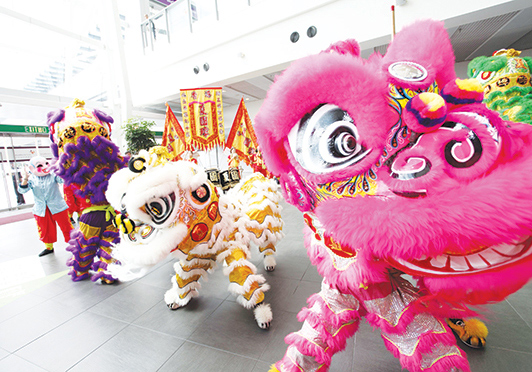Industry

Hong Kong Show Busier Than Expected
As dealers prepare for the fourth-quarter holiday season, they’re hoping for sustainable trading momentum.
By Avi Krawitz
 |
| Photo: courtesy JewelleryAsia.com |
Diamond market sentiment improved in September as trading returned to normal after the seemingly long summer vacation period. Dealers were relieved there was steady traffic and buyer interest at the Hong Kong Jewellery & Gem Fair, even if actual buying was limited.
Polished prices were relatively stable as suppliers refused deep discounts in an effort to protect their profit margins while the rough market continues to be relatively strong. The RapNet Diamond index (RAPI™) for 1-carat polished diamonds was flat in the period September 1 to 25 (see RapNet Diamond Index [RAPI™] chart in slideshow).
“The diamond market is stable and polished prices are steady,” said Lawrence Ma, founding president and chairman of the Diamond Federation of Hong Kong (DFHK). “Buyers are interested in goods at the show but prices have not firmed up.”
YOU MUST HAVE JAVASCRIPT ENABLED TO VIEW THE SLIDESHOW
Still, wholesalers and retailers in Asia Pacific are more conservative in their inventory purchases, particularly as economic growth has slowed, impacting jewelry consumption in the region.
While Chow Tai Fook, the largest jeweler in the region, held large inventory two years ago, the company tightened its rough and polished buying in 2015, explained Kent Wong, managing director of the company’s jewelry division.
Chow Tai Fook also scaled down its store expansion, opening 62 stores in fiscal 2015-16 compared with around 200 in previous years. Luk Fook Holdings, considered among the top three Hong Kong–based jewelers, has made a similar adjustment, according to Nancy Wong, an executive director at the company.
“Things are growing at a slower pace in China and certainly in Hong Kong, where tourism is down,” said one Hong Kong–based wholesaler. “People are holding less goods and are more conservative in stocking up.” That has left midstream dealers and manufacturers carrying the burden of the industry’s excess inventory. While Ma reported stock levels are “in a healthier place” than they were in 2015, there is still an overcapacity — of goods and dealers — in the market, argued an Israel-based dealer.
Meanwhile, inventory levels continue to rise as manufacturing ramps up before Diwali on October 30, when most Indian factories close for two to four weeks. De Beers sold $630 million worth of rough in its sale that took place late August through the first week of September. Manufacturers brought forward some of their demand in order to cut and polish rough diamonds in time for the important retail selling season, the company explained.
Trading on the rough secondary market was steady, with De Beers boxes selling at higher premiums among dealers. Prices firmed at the ALROSA sale in mid-September even as many expect a slowdown in the fourth quarter.
“Market conditions are likely to depend on continued supply control from the major producers to the midstream and stable retail demand, particularly in the U.S., the largest global market,” said Johan Dippenaar, CEO of Petra Diamonds, which raised its production outlook for the current fiscal year (see Petra Diamonds Production & Sales chart in slideshow). Given that the first half of the calendar year is the seasonally stronger time for the rough diamond market, Petra remains cautious for the rest of 2016, Dippenaar added.
Suppliers at the Hong Kong fair expected a similar softening of rough demand in the fourth quarter, hoping the holiday season will boost polished sales and their profit margins.
The focus following the show shifted to the U.S., which has maintained stability throughout the year. U.S. polished demand has been stable, with imports flat in the first half of 2016, while exports were slightly down (see U.S. Polished Diamond Trade chart in slideshow).
Most industry executives that spoke with Rapaport Magazine did not expect an exceptional season given the continued challenges in the global economy. Declining wealth in the Middle East and Russia due to oil and currency volatility, the refugee crisis and terror concerns in Europe, and the U.S. presidential elections are all contributing to the caution in the market, explained an Antwerp-based dealer, who requested to remain unnamed.
Dippenaar expressed concern that macroeconomic conditions would remain volatile and damaging to consumer confidence in the short term. He sees a more encouraging view of the market in the long term, with renewed generic marketing starting this holiday via the Diamond Producers Association (DPA).
At the start of the fourth quarter, there is some anticipation the holiday season will boost the trade. Certainly, as the bulk of holiday orders have come through and suppliers work to fill those orders, dealers are hoping to build on the improved mood that was evident at the Hong Kong show.
“We’ve endured a difficult time so we expect the market can only improve, and it always does in anticipation of the September show, said one India-based manufacturer. “The question is always if it is sustainable.”Article from the Rapaport Magazine - October 2016. To subscribe click here.
|
|